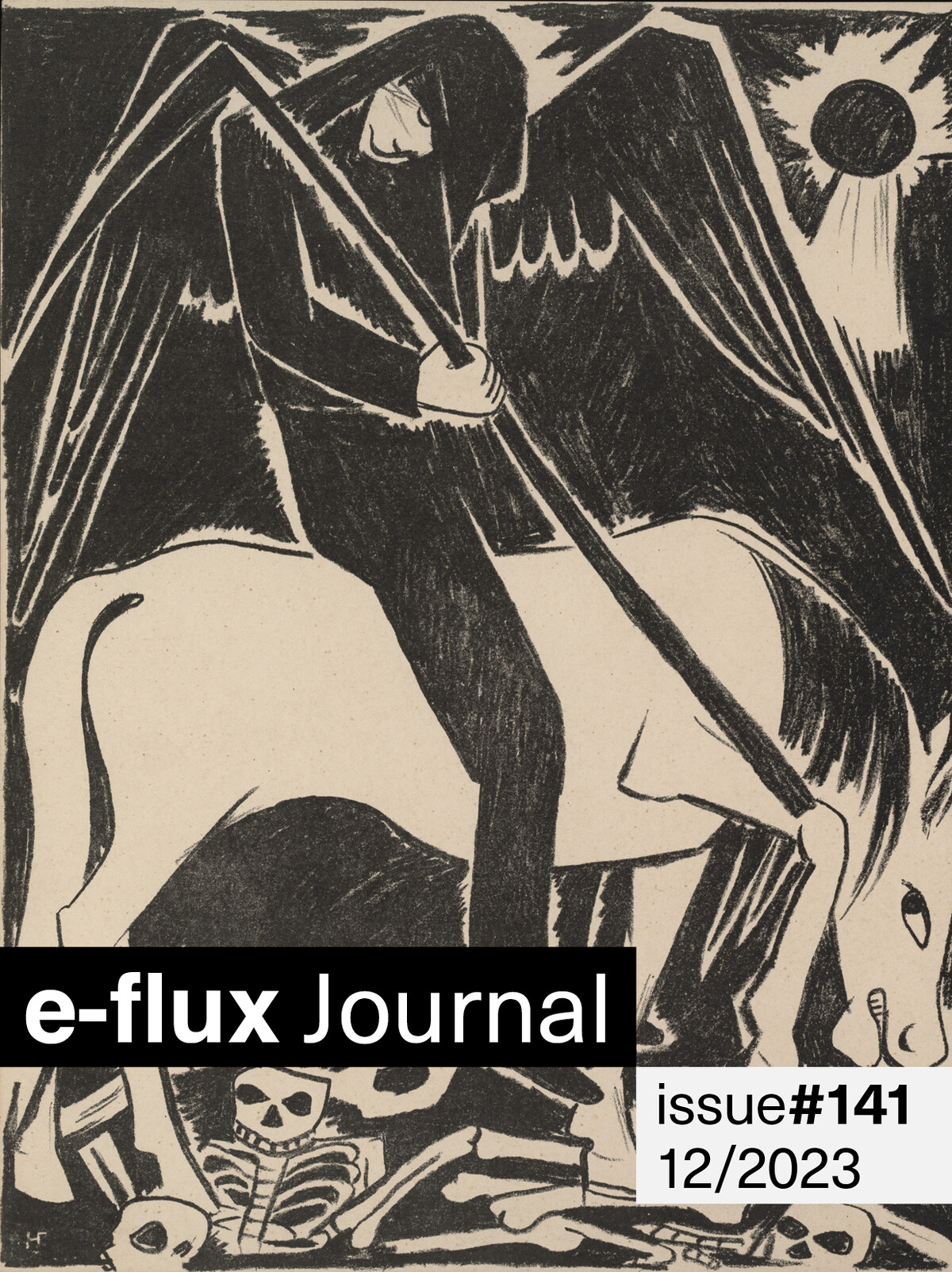Last month, Documenta 16’s Finding Committee resigned en masse following the resignations of Bracha L. Ettinger and Ranjit Hoskoté. In his written resignation, Hoskoté explained the high irony of being accused of anti-Semitism for having signed an online petition against an event hosted by the Israeli Consulate to India in 2019. The event drew an alliance between Zionism and Hindutva, the Hindu ultranationalist ideology that was inspired by European fascism and that proposed Hitler’s policy for Jews as a method for dealing with Indian Muslims. Yet Germany’s culture minister, Claudia Roth, denounced the obscure 2019 petition Hoskoté signed as “clearly anti-Semitic” for describing Zionism as “racist” and Israel as a “settler-colonial apartheid state,” threatening to withdraw state funding if Documenta didn’t cut ties with Hoskoté.
The delirium of accusations and cancellations in Germany now reads like the plot of a Philip K. Dick novel, where a creeping suspicion is conveniently misunderstood to such an extreme that it expands uncontrollably into its own reality or totalitarian system. In the US, the heads of three major universities were called before a Republican-organized congressional hearing to answer to how their campuses harbor anti-Semitism in demonstrations against Israel’s military campaign in Gaza. In fact, Trump’s Republican supporters—including those who presided over the hearing—advocate the actually racist and anti-Semitic theory of a “Great Replacement” plot by Jews to replace white Europeans with nonwhite immigrants. The method seems clear: to intimidate progressive institutions of art or learning into conflating anti-Semitism with opposition to the actions of Israel’s right-wing government. A serious problem arises when such an undeniably ultranationalist agenda creates a massive opening for growing ethno-nationalist and white-supremacist movements in the US and Europe, whose increasing expressions of actual anti-Semitism go unchecked under their banner of support for the State of Israel.
In this issue of e-flux journal, Sami Khatib recalls Bertolt Brecht’s non-character from the dire early 1930s: Herr Keuner, “the thinking man.” From either side of a century ago, Brecht, Walter Benjamin, and Rosa Luxemburg remain clear-eyed critics who make wagers for the survival of thought and art past the dawn of totalitarianism and contemporary fascism. Keuner—mister nobody—points to Walter Benjamin’s plea to replace doxa with an impoverishment of theory that can meet the realities of impoverished experience. For Benjamin, only a new, positive iteration of the “barbarian” could derail a capitalist, war-ridden train otherwise speeding toward certain wreckage. “Now,” writes Khatib, “in post-cultural capitalism and the rise of a new fascism, the figure of the barbarian fully reveals its dialectical nature, allowing for paradoxical positions of barbaric salvage, regressive progression, and anti-utopian utopia.”
Meanwhile, Evan Calder Williams begins his essay, which signals a larger editorial project, by tracing the meanings of “paralysis” as a biopolitical limit concept, an interval to flows and a threat or promise of disability, but also an invitation to corporeal thinking.
Nkule Mabaso and Serubiri Moses’s text on the rise of “citational practices” reexamines a panel the authors and their collaborators held to debate the broadening concept of citation in South African contemporary art and beyond. In contemporary citation, historical artists and writers whose movement was severely limited—for example by apartheid—begin to find some posthumous transnational motion and solidarity. In a short oral history, the Mumbai-based performance artist Amol K Patil speaks about crafting new visual, gestural languages from sources spanning his collaborations with fellow artists who speak only visually, the pages of his father’s experimental theater scripts, and observations on the changing kinetics of daily caste-informed gestures in India.
Xinyue Liu locates the potential for spectral justice in photographic sightings of ghost species—extinct animals that somehow reappear in the form of blurry images. Dorota Jagoda Michalska traces folwark modernity and the movement of grain across Poland, Lithuania, and Ukraine. Both Liu and Michalska, in their own ways, insist on extended exercises of being led toward urgent new vision by more-than-human entities: ghosts in one case, grain in the other.
Sonia D’Alto employs an imperative from poesis to reconsider the feminist mythmaking of the 1970s Italian collective Le Nemesiache. In an echo of Denise Ferreira da Silva, D’Alto proposes using “poesis to disrupt the ‘Ordered World.’” To this end, she sees in feminist mythmaking an art of interruption that can “recast space, chronology, and subjectivity.” In a chapter on the “Automation of General Intelligence” from his new social history, The Eye of the Master, Matteo Pasquinelli urges the construction of a collective counter-intelligence based on confronting the very epistemology of AI.
Looking back to the twentieth century in what could be an instructive read of the twenty-first, David Morris considers Artists for Democracy’s place in the project of Indigenous internationalism. In the 1970s, Artists for Democracy explored the potential to express “an expansiveness of the ‘we’ in ‘what we are today.’” Could “we,” in the present, also begin exiting the lures of contemporary factionalism and commit instead to expanding the messy possibilities of our “shared presence in non-unity”?
In our 141st issue, we also present Manuel Borja-Villel and Vasıf Kortun’s joint proposal for the upcoming Documenta 16 in Kassel—a proposal that, for various reasons, could not be considered by the edition’s Finding Committee. We are grateful to its authors for offering a rare view into an imagined—but so far unrealized—collaboration to signal the spirit, intentions, and key references for a possible edition of Documenta.


